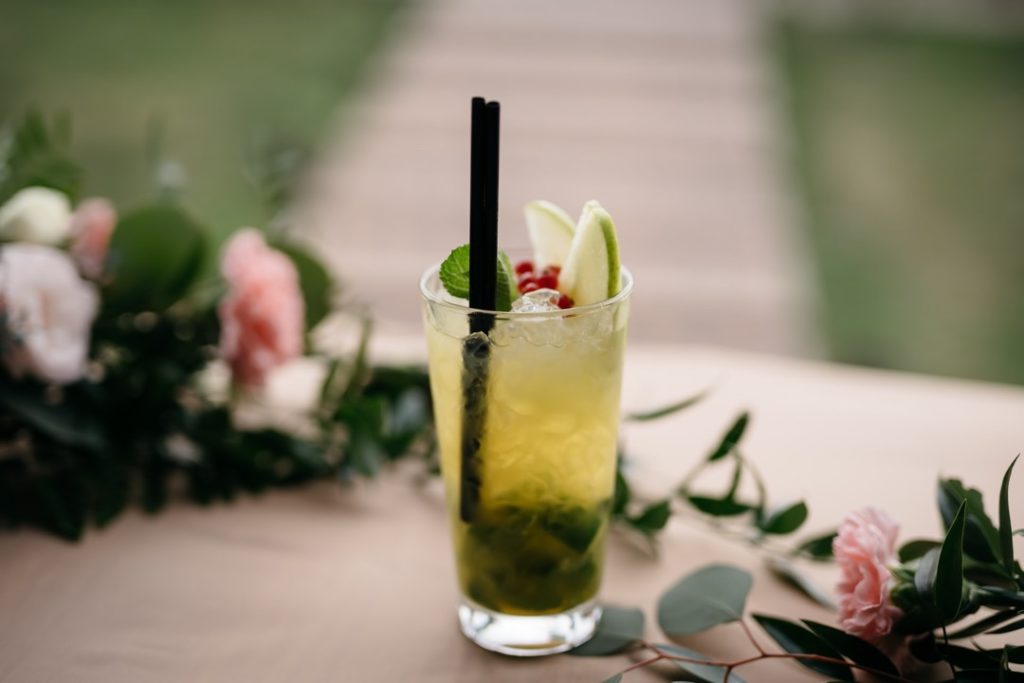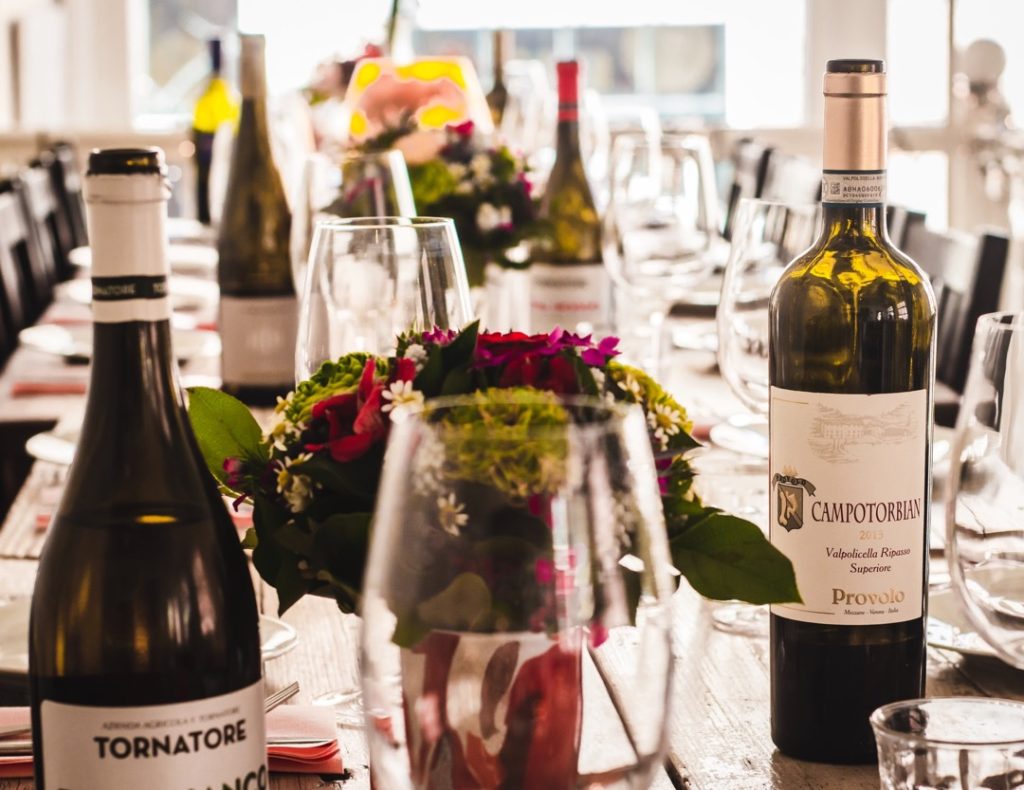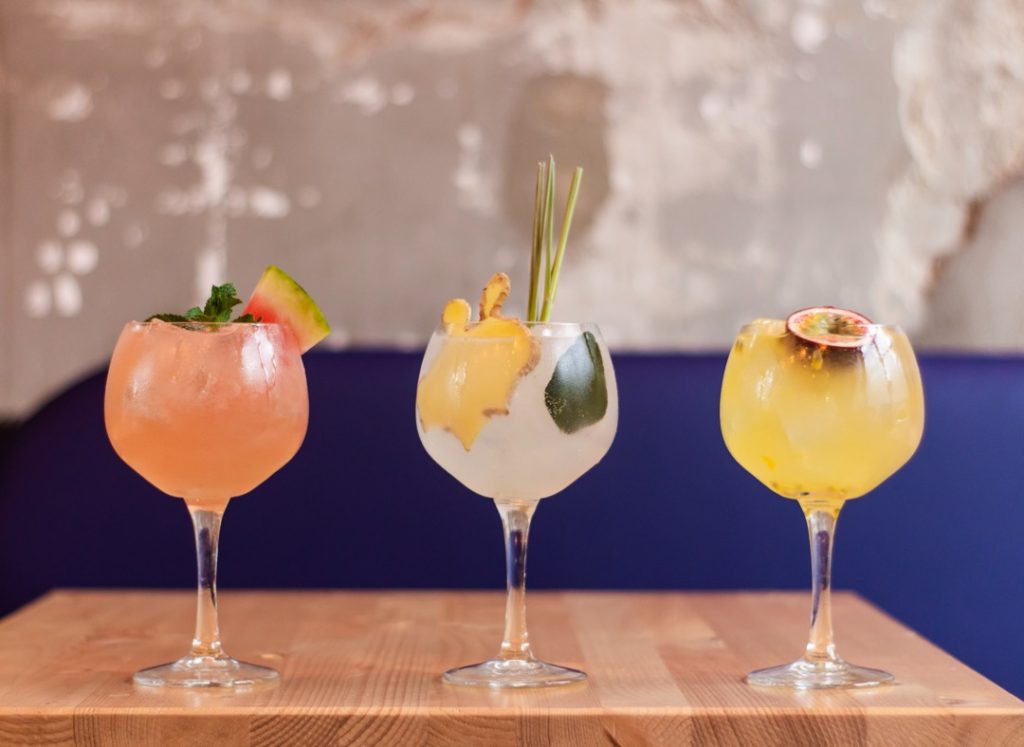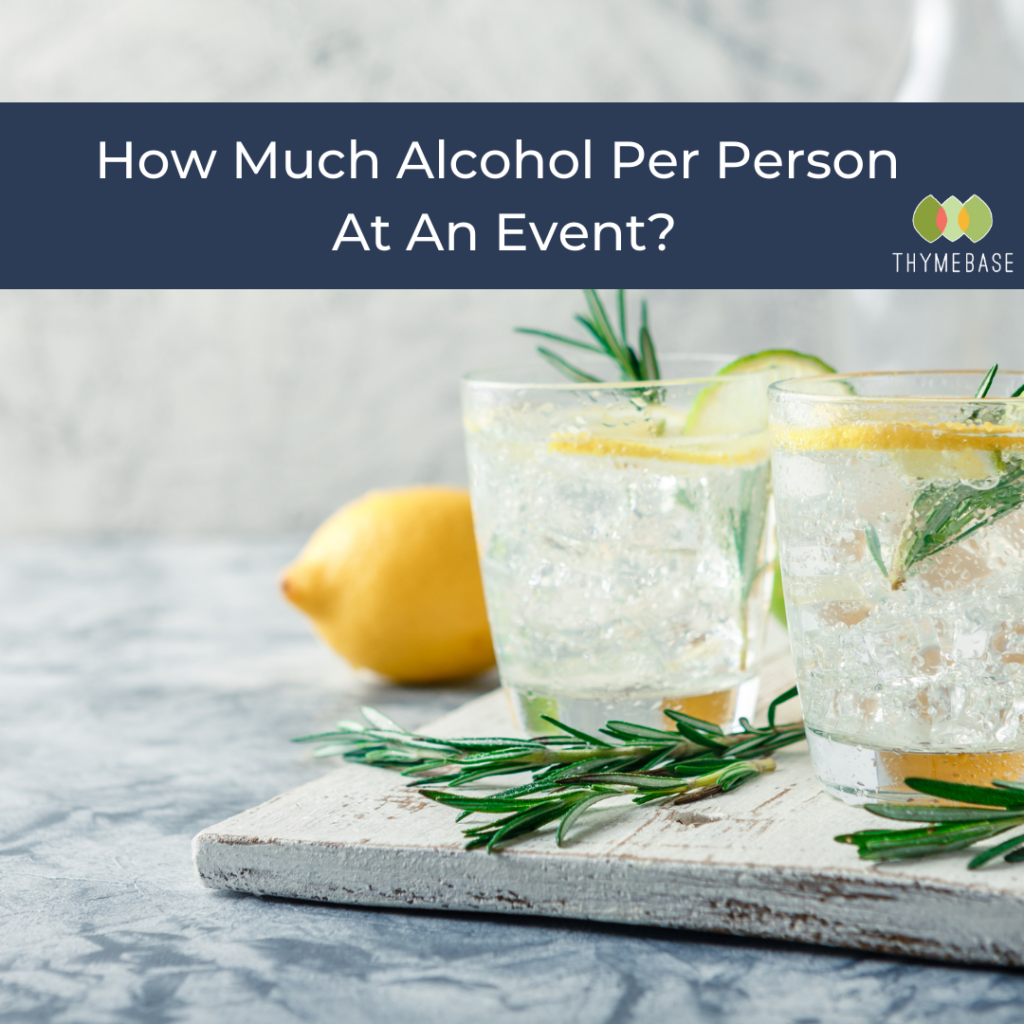Here’s how to calculate how much alcohol per person at your event so you can stay on budget without skimping on a good time.
People like to drink at parties. That is a fact. But it can get expensive if you order too much booze or provide the wrong type of alcohol. Alternately, it can be a bit of a disappointment if you do not order enough. There are multiple ways that this can be calculated. Your vendor may have a different calculation that they use. Still, you can use this information to get an idea beforehand.

Many events are alcohol-free. This is not a message saying that you must have alcohol at your event. I’ve written a separate article on how to estimate the total beverages needed for an event. However, if you choose to, here is how to estimate how much you will need. Remember to make sure that those who are drinking are of legal age and are not driving.
Different types of events
In general, people will drink more at a wedding than they will at a child’s birthday party. People will drink more at a cocktail party than a baby shower. The type of event that you host will affect the amount of alcohol that you will need. Events geared more towards family will generally have less drinking, not just because children do not drink alcohol, but due to the need of parents to look after their children.
Different times of day/week
People drink more in the evening than they do in the morning. They also consume more on Friday and Saturday than on Sunday. Many people drink less during weekdays because they need to work the following morning.
Different types of alcohol
For a brunch event, there will probably be champagne and wine, but not likely hard alcohol. To watch the Super Bowl, you will probably have beer and whiskey. Some events may have an open bar where you can choose any type of drink imaginable. In contrast, others may be limited to a signature drink.

Culture
The way one drinks is different depending on where you live and the culture you were brought up with. I was brought up in a household where my father may have a shandy while grilling on a hot day, and my mom would have a glass of wine only on special occasions. I married into a family where every family gathering involves alcohol, either a leisurely afternoon relaxing with a beer or just a shot of the local spirit to warm you up when it is cold.
Different countries have different averages of how much they drink. Within Latin America, the average consumption per person (measured in liters of pure alcohol) can range from 2.4L to over 10L. That is a fourfold difference amongst countries that share a national language.
Ages and genders of guests
In the US, guests under 21 are not allowed to drink (though many do). In other parts of the world, the legal drinking age is 18. There is not a lot of current data on how age and gender affect how much people drink. The Washington Post has an amazing chart that shows how alcohol consumption slowly builds and falls over women’s lifetime. While men’s consumption starts high when they begin to drink and slowly drink less throughout their lifetime.
Multiple events
Thus when you have multiple events, you will need to estimate each one on its own. You may be able to use some alcohol from one event for another, but each event also may use different types. For example, a wedding weekend may include:
- Rehearsal dinner on Friday night.
- The wedding itself on Saturday.
- A Sunday brunch.
And of course, you should be planning events in ThymeBase, where you can combine multi-day events into one event timeline. You can also manage event tasks, even for teams.
The Math/Case Studies
I’m going to go through a few calculations of different types of events. This will help calculate the total amount of alcohol needed, though not type. But conversions to type will be available.
The data that is needed is:
- Number of adult guests (N)
- Length of event, in hours (L)
- Type of event (E)
- Day of Week (W)
- Time of Day (D)
So the starting assumption for many events is two (2) drinks the first hour, then one (1) drink per hour per person.
The equation for that would be Total number of drinks (T) = Number of adult guests (N) x Length of event, in hours (L) plus one (1); T = N x (L+1)
This does not consider the type of event, day of the week, or the time of day as mentioned above. For that, we use a multiplier for each type of event, the day of the week, and the time of day. The equation for that would be Total number of drinks (T) = Number of adult guests (N) x Length of event, in hours (L) plus one (1) x Type of event (E) x Day of week (W) x Time of Day (D); T = N x (L+1) x E x W x D
| Type of Event | Multiplier | Day of Week | Multiplier |
| Children’s birthday party | 0.8 | Weekday | 0.8 |
| Children’s religious event (Bris/Baptism) | 0.8 | Weekend | 1.0 |
| Adolecent religious event (Bar/Bat Mitzvah/First Communion) | 1.0 | Time of Day | |
| Wedding (seated and catered) | 1.0 | Morning | 0.8 |
| Anniversary | 1.0 | Midday | 1.0 |
| Cocktail Hour (minimal seating, passed food) | 1.2 | Evening | 1.0 |
| Baby Shower | 0.8 | ||
| Sporting Event | 1.2 |
I know that it’s a lot of numbers. Some examples should help.
Example 1: Wedding for 200 people (180 adults)
Would you expect people to drink more on a Saturday night than a Sunday night? What about a Sunday morning? Let’s see what the numbers say.
Equation 1a – Saturday evening wedding for 180 adults, 5 hours long:
| N | L | E | W | D |
| 180 | 5 | 1.0 | 1.0 | 1.0 |
T= N x (L+1) x E x W x D = 180 x 6 x 1.0 x 1.0 x 1.0 = 1080 drinks needed.
Equation 1b – Sunday evening wedding for 180 adults, 5 hours long:
| N | L | E | W | D |
| 180 | 5 | 1.0 | 0.8 | 1.0 |
T= N x (L+1) x E x W x D = 180 x 6 x 1.0 x 0.8 x 1.0 = 864 drinks needed.
Equation 1c – Sunday brunch wedding for 180 adults, 5 hours long:
| N | L | E | W | D |
| 180 | 5 | 1.0 | 1.0 | 0.8 |
T= N x (L+1) x E x W x D = 180 x 5 x 1.0 x 1.0 x 0.8 = 864 drinks needed
As you can see, you will probably need 1080 drinks for Saturday night, but only 864 drinks for Sunday night or Sunday morning. That seems logical.
Example 2: Small family get togethers
Equation 2a – Sunday morning baby shower for 40 adults, 2 hours long:
| N | L | E | W | D |
| 40 | 2 | 0.8 | 1.0 | 0.8 |
T= N x (L+1) x E x W x D = 40 x 3 x 0.8 x 1.0 x 0.8 = 77 drinks needed.
Equation 2b – Your favorite team is the the NCAA basketball finals! Monday night basketball game for 20 adults, 3 hours long:
| N | L | E | W | D |
| 20 | 3 | 1.2 | 0.8 | 1.0 |
T= N x (L+1) x E x W x D = 20 x 4 x 1.2 x 0.8 x 1.0 = 77 drinks needed
As you can see, you will probably need the same amount of drinks for half the people when watching an evening sporting event as opposed to hosting a morning baby shower.
What the number of drinks means
Per the United States National Institute of Health, “…one “standard” drink (or one alcoholic drink equivalent) contains roughly 14 grams of pure alcohol, which is found in: 12 ounces of regular beer, which is usually about 5% alcohol; 5 ounces of wine, which is typically about 12% alcohol; [or] 1.5 ounces of distilled spirits, which is about 40% alcohol.”
Translated into common parlance, a can of beer contains one (1) drink, a bottle of wine contains five (5) drinks, and a 750mL bottle of spirits contains approximately 17 drinks.
So the 77 drinks in Example 2 can be split into a few different ways. For the baby shower, let’s say that there is wine served. So 77 drinks divided by 5 drinks per bottle means that you will need approximately 16 bottles of wine for the event.
For watching the sporting event, there will probably be a mix of ⅔ beer and ⅓ spirits, so 77 x ⅔ = 52 beers and 77 x ⅓ ÷ 17 = 1.5 bottles of spirits. I recommend rounding up. You would probably purchase 60 beers (5 12-packs) and 2 bottles of spirits for the sporting event. These calculations do not include how much ice that you will need. See this article for that information.

Spirits and mixers
Mixers are non-alcoholic drinks that are mixed with liquor to dilute the alcohol. The calculation of these is included in the section on alcoholic beverages. The amount necessary depends on the quantity of expected spirits to be drunk. Mixers tend to be juice and carbonated beverages but can be other types, including simple syrup, freshly squeezed lime juice, or a prepackaged drink mix. An average ratio is two (2) ounces of mixer for each ounce of spirit. Therefore, for each 750mL bottle of spirits estimated for an event, you will need 1.5L of mixer.
Drink up!
Once you have an idea of how much alcohol you need, you can start investigating prices in your area and budgeting for your event. Knowing that you have enough drinks for your guests will help everyone enjoy your event.

